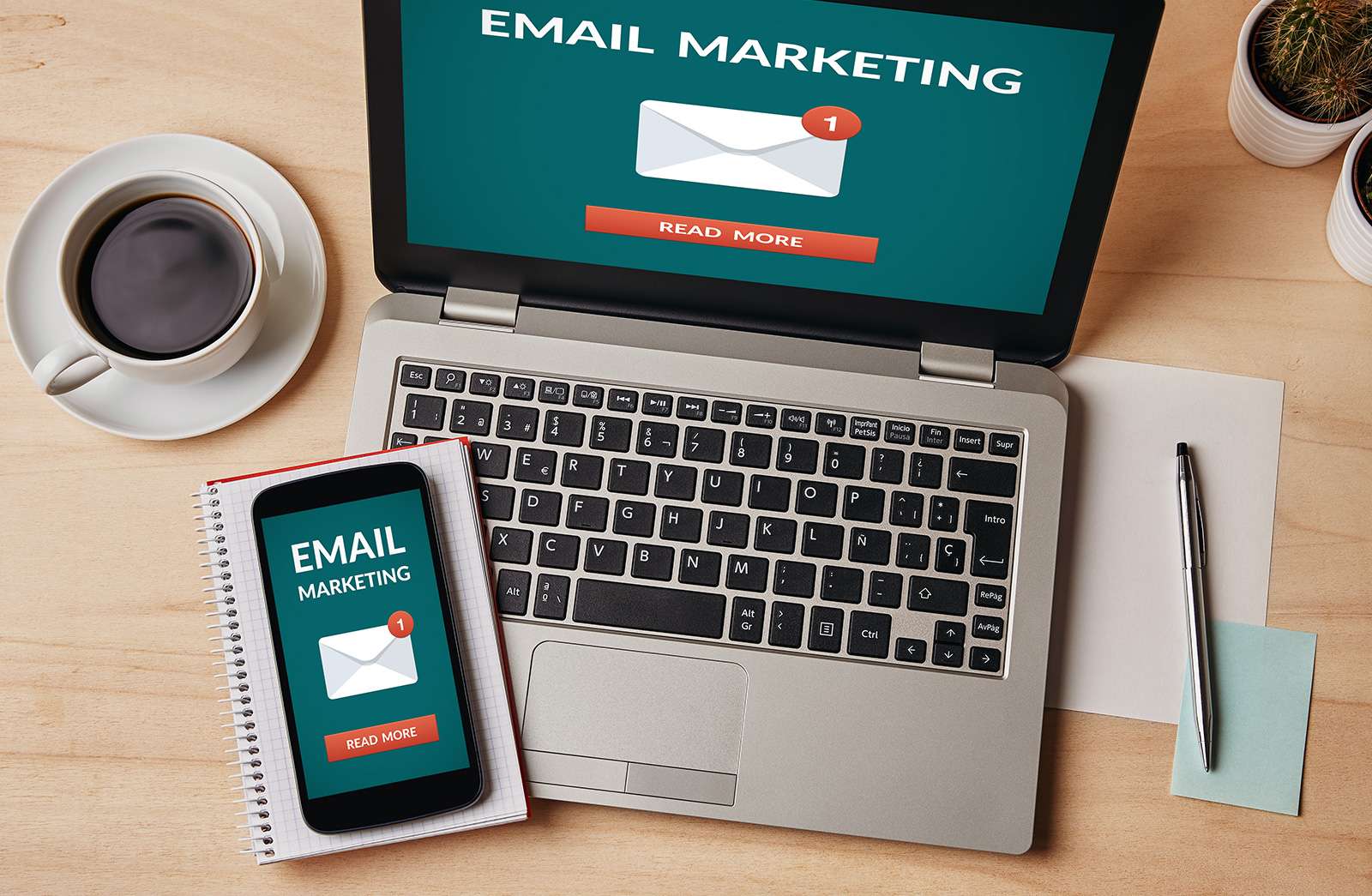Email marketing delivers unmatched ROI, drives engagement, and builds direct connections with your audience. But sending emails without following the law puts your brand at serious risk. Consumers expect transparency, and compliance is essential.
In this guide, you’ll learn who you can legally email, why consent matters, and how to stay compliant with laws like CAN-SPAM, GDPR, and CASL. Whether you’re growing your list or tightening your process, these tips will help you send smarter, safer, and more effective emails.
Understanding email consent
Before you send a marketing email, you need permission. That permission is called email marketing consent — a clear indication that someone agrees to receive promotional messages from your business. Without it, you risk violating privacy laws and damaging the trust you’re trying to build.
Consent comes in two primary forms: express and implied.
Express consent
Express consent means the individual gave you direct permission to email them. They might have filled out a sign-up form on your website, checked a box during checkout, or confirmed their subscription through a double opt-in email. This form of consent is the gold standard because it’s clear, trackable, and legally sound across most jurisdictions.
Implied consent
Implied consent applies in situations where a relationship already exists, even if the person hasn’t signed up explicitly. For example, a recent customer who made a purchase or someone who requested a quote may qualify under implied consent, depending on the laws in your region.
While this type of consent allows limited outreach, it comes with stricter rules and often a shorter timeframe for sending messages.
Consent plays a vital role both legally and ethically. From a legal perspective, regulations like CAN-SPAM, GDPR, and CASL require clear permission before sending promotional content. Failure to follow these laws can lead to financial penalties and blacklistings.
Ethically, asking for consent shows respect for your audience’s privacy and builds trust. People are more likely to engage with your emails when they’ve chosen to receive them.
Establishing valid consent is the first step to a strong email marketing program. It protects your brand, strengthens your list quality, and lays the foundation for long-term success.

Who you can legally email
Not everyone qualifies to receive your marketing emails. To stay compliant and maintain trust, you need to ensure each contact on your list has given you the appropriate level of permission. Here’s who you can legally include in your campaigns.
People who opted in through your website or form
When someone fills out a form on your site — whether to join your newsletter, download a guide, or access exclusive content — they’ve given you permission to contact them. This is one of the most reliable ways to collect express consent. You gain clear documentation of their opt-in, which supports legal compliance and keeps your list clean.
Existing customers with a prior business relationship
If someone has purchased from you recently or requested a service, you may have a limited window to send marketing messages based on that relationship. This is known as a “soft opt-in.” It allows you to promote related products or services to previous customers without a separate opt-in.
However, the rules around this vary depending on where your customer lives, so always check the relevant laws.
People who gave written or verbal permission
You might gather consent in person, at events, or through networking. If someone gives you their business card or verbally agrees to receive emails, that may qualify as valid consent, provided you make the purpose of your communication clear. To protect your business, always record how and when consent was given, especially if it was collected offline.
Subscribers who meet the requirements of relevant laws
Regulations like GDPR (Europe), CAN-SPAM (United States), and CASL (Canada) each define who qualifies as a legal email recipient. GDPR requires clear, affirmative consent. CASL recognizes both express and implied consent but enforces strict time limits. CAN-SPAM focuses on transparency and includes requirements like offering opt-outs and providing a physical address.
The bottom line: You must know where your contacts are from and understand the rules that apply to each region. When you gather consent clearly and store it properly, you create a permission-based email list that performs better and keeps your brand protected.

Who you should avoid emailing
Not every email address belongs on your marketing list. Sending messages to the wrong people risks more than low engagement — it opens the door to legal trouble, spam complaints, and lasting damage to your brand’s reputation. To build a healthy, high-performing list, you need to avoid these common pitfalls.
Purchased, rented, or scraped email lists
Avoid using any list you didn’t grow yourself. Buying or scraping email addresses may seem like a shortcut to quick growth, but it rarely delivers value. These contacts haven’t given you permission to contact them, which means your emails are more likely to land in spam folders — or worse, trigger complaints and blacklisting. Regulations like GDPR and CASL strictly prohibit this practice.
Contacts who unsubscribed or marked previous emails as spam
Once someone opts out, respect their choice. Continuing to send messages after an unsubscribe violates multiple email laws and erodes trust. The same applies to anyone who flagged your emails as spam. If your messages no longer serve or interest someone, take them off your list and focus on building stronger connections elsewhere.
Anyone without documented consent
Under laws like GDPR and CASL, you need to prove that each recipient agreed to receive your emails. That means having a clear record of how and when they gave permission.
If you don’t have that documentation — whether the consent was expressed or implied — you should not include them in your marketing emails. It’s always better to build slowly with full compliance than to risk fines or deliverability issues.
Old or inactive contacts without recent engagement
A large list doesn’t help if most people never open your emails. In fact, sending to inactive subscribers harms your sender reputation and decreases overall deliverability. If someone hasn’t interacted with your emails in several months, consider running a re-engagement campaign.
If they still don’t respond, remove them. A smaller, engaged list consistently outperforms a larger one full of unresponsive contacts.
Focusing on permission-based marketing keeps you compliant and improves your results. When you email people who want to hear from you, your open rates rise, your brand credibility grows, and your marketing strategy delivers stronger, longer-lasting returns.
Key email marketing laws to know
Understanding the laws that govern email marketing helps you protect your business, maintain deliverability, and build lasting trust with your audience. Several major regulations outline how and when you can legally send marketing emails. Each law applies based on the location of your recipients, not your business, so staying informed is essential.
CAN-SPAM Act (United States)
The CAN-SPAM Act sets the foundation for email marketing compliance in the United States. It allows you to send marketing emails without prior consent, but only if you follow specific rules. You must clearly identify your message as a promotional email, include accurate sender information, and provide a straightforward way for recipients to opt out.
Every message must include a valid physical mailing address, and opt-out requests must be honored promptly. Failing to follow these guidelines can lead to serious fines and damage to your sender reputation.
GDPR (European Union)
The General Data Protection Regulation (GDPR) applies to any business sending emails to individuals in the European Union. This law requires a lawful basis for sending messages, most commonly explicit consent.
You must obtain clear, affirmative permission before adding someone to your list. GDPR also mandates easy withdrawal of consent, transparent data handling practices, and secure storage of personal information. You need to keep detailed records showing when and how each subscriber gave permission to receive emails.
CASL (Canada)
Canada’s Anti-Spam Legislation (CASL) takes a strict approach to email marketing. You need either express or implied consent to send messages to Canadian recipients. Express consent involves a clear opt-in, while implied consent may apply in cases of recent business relationships or inquiries.
CASL also requires a clear unsubscribe mechanism in every email, and businesses must maintain accurate records of consent. This law imposes heavy penalties for violations, so compliance is critical when marketing to Canadian audiences.
Following these laws protects you legally and strengthens your relationship with your audience. When you respect privacy, communicate clearly, and offer control, you create a more trustworthy and effective email marketing strategy.

Best practices for staying compliant
Compliance in email marketing protects your business and builds long-term trust with your audience. When you follow best practices, you reduce legal risks, improve deliverability, and create a more responsive list. Here are key habits that keep your campaigns ethical, effective, and fully compliant.
Use double opt-in for clear confirmation
Double opt-in adds an extra layer of protection for your list. After someone signs up, send a confirmation email asking them to verify their subscription. This step ensures the address is valid and the user genuinely wants your content. It also helps prevent spam traps, fake entries, and misunderstandings about consent.
Keep detailed consent records
Track when, where, and how each subscriber gave permission to join your list. Store this information securely, and include the method of opt-in, whether through a website form, purchase, or offline interaction. If someone questions their subscription, you’ll have proof that shows clear consent.
Provide a clear unsubscribe link in every email
Always include a visible, easy-to-use unsubscribe link in every message. Allow recipients to opt out without jumping through hoops. Make the process fast, simple, and respectful. This meets legal requirements, maintains your brand’s credibility, and reduces the chances of being marked as spam.
Segment your lists based on geography and consent type
Not every subscriber falls under the same law. Use list segmentation to group contacts by region, consent status, or engagement level. This approach lets you customize your messaging, adjust compliance settings, and avoid sending emails that violate international regulations like GDPR or CASL.
Regularly clean your list
Over time, inactive or unengaged subscribers drag down your performance and increase your risk of spam complaints. Remove contacts who haven’t opened or clicked in several months, especially if they never confirmed their subscription. A smaller, more engaged list outperforms a large, unresponsive one every time.
Staying compliant means sending better emails to people who want to hear from you. These best practices keep your marketing honest, respectful, and results-driven.
Tools to help manage compliance
Managing email compliance becomes much easier when you use the right tools. These resources streamline consent collection, automate key legal requirements, and reduce the risk of mistakes that could hurt your reputation or trigger penalties. Whether you’re getting started or looking to tighten your process, these tools help you stay organized and legally sound.
Email marketing platforms with built-in compliance features
Platforms like Mailchimp, Klaviyo, and ActiveCampaign offer features designed to support legal compliance. You can automate double opt-in processes, include unsubscribe links by default, and segment contacts based on location or consent status. These platforms also track sign-up sources and store key data points to help you meet regulatory standards.
Consent tracking systems
A dedicated consent tracking system records when and how each person joined your list. It stores timestamps, form details, and IP addresses so you always have proof of permission.
Some CRM platforms include this functionality, while others integrate with your email tools to provide a centralized audit trail. Keeping clean records supports transparency and strengthens your legal defense if questions arise.
GDPR and CAN-SPAM compliance checklists
Compliance checklists act as step-by-step guides to ensure your campaigns meet legal requirements. Use these tools to review your sign-up forms, email templates, and data handling processes. They help you confirm that every part of your workflow — opt-ins, messaging, storage, and opt-outs — follows the rules of the regions where your audience lives.
Legal templates for privacy policies and sign-up forms
Clear and accessible language helps users understand what they’re agreeing to. Use professionally written legal templates to create privacy policies, cookie disclosures, and opt-in forms that meet regulatory guidelines. These templates reduce confusion, set proper expectations, and improve user confidence when they share their contact information.
When you combine the right tools with informed practices, you build a stronger foundation for your email marketing efforts. Staying compliant actually protects your growth. And with the right systems in place, managing that compliance becomes part of a smarter, more sustainable marketing strategy.

Revity Marketing Agency: The email marketing experts
Keeping up with evolving regulations, managing consent records, and optimizing email performance takes time and expertise. That’s where Revity Marketing Agency comes in.
Our team understands the rules, knows the platforms, and builds compliant email strategies that get results. We help you grow your list, refine your messaging, and stay legally sound so you can focus on running your business.
Partner with Revity to simplify compliance, increase deliverability, and make every email count. Reach out today to get expert support for your email marketing strategy.







